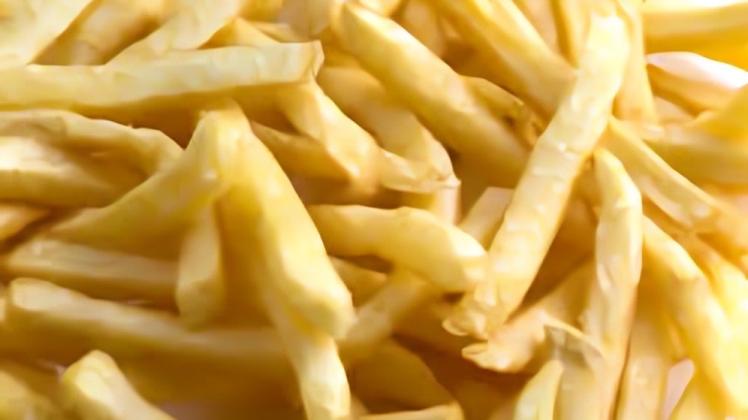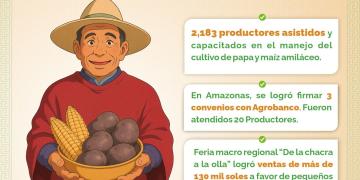EEUU: Potato processing in the U.S. is at its lowest level in five years.
Potato processors in the United States have really let their hair down this spring, according to USDA data.

However, potato growers’ barns are less full than they were a year ago. More potatoes are being used for other purposes than being processed into French fries.
According to official figures from the USDA, on the reference date of April 1, 5.92 million tons of potatoes were still in stock at growers in the United States. That is a decrease of 5.6% (344,000 tons) compared to a year earlier. Since the previous stock survey, on February 1, 3.45 million tons of potatoes have left the barns.
5% less processing
Of the total harvested volume, which amounted to over 19 million tonnes last autumn, almost 10 million tonnes have now been delivered by growers. A third of the total volume has been processed by the industry. This concerns 6.68 million tonnes that passed through the gates of the factory up to 1 April. This means that the pace is almost 5% behind a year earlier, when a good 7 million tonnes were processed. Total consumption is also around 5% lower.
The five-year average for April 1 is 6.86 million tons, which means that current processing is 2.6% behind. Despite the fact that factories have purchased less volume, more tons have been delivered. 3 million tons of potatoes were sent to a destination outside of processors, which is no less than 50% more than in 2024. Incidentally, that is not very special. In the past five years, that has already happened twice before.
Lower stocks
In the major potato states of Idaho and Washington, growers both had fewer potatoes in stock last month. In Idaho, it was as much as 11% less. Good for 272,000 tons. This is largely due to a smaller area in that state. In Washington, the level was almost 2% lower. Other larger potato growing states also reported smaller stocks. In a few ’smaller’ states, the stock level was slightly higher.
Potato processors in the largest growing regions: Idaho, Washington and Oregon have all processed fewer potatoes. That is remarkable in itself, because the raw material for processing is there. Insiders attribute the movement mainly to a difficult export market, because the domestic sales and consumption of fries are described as good.
Incidentally, there is still some reservation regarding the stock figures. It is not the first time that the USDA has made (substantial) corrections to the stocks afterwards.
Disappointing exports
The current processing season still had at least four months to go at the time these figures were compiled. Insiders expect the processing level to continue to disappoint and that more potatoes will therefore remain. The large harvest is not helping either. In the US, sales of French fries are going well, but in February of this year the export level was 9% lower. American processors are also struggling with increasing competition on the world market, partly as a result of high prices for their product. Anti-US sentiment in the world is also not doing the Americans much good when it comes to trade.
As a result of this situation, the factories are making considerable adjustments to the volume to be contracted. In both the US and Canada, price reductions of 5% to over 7% are being implemented by all factories, although not all contracts have been signed yet. Processors require 10% to 15% fewer potatoes next season, with peaks of up to 30%. Growers have not waited for the negotiations everywhere. For example, in Idaho, planting continues. Potato growers are choosing to plant more dual-purpose varieties, which can also be sold as table potatoes. This concerns 6,000 to 8,000 hectares.
American potato growers are still busy planting. In the southern states, the crops are in the ground, but in the north, it is a fifth. Rainfall sometimes makes work more difficult. The prospects for Idaho and Washington this season are good, but not everywhere has enough snow fallen last winter to replenish moisture reserves.
Planting season Canada just started
Planting is only just getting started in Canada. The first machines are running on Prince Edward Island. Growers are dealing with 5% lower contract prices, but processor Cavendish is keeping its volume stable. Further along the east coast, planting also has yet to get going properly. The situation is mixed in the prairie states of Alberta and Saskatchewan. In Alberta, the planting machines are running, while in Saskatchewan, snow and rain are spoiling the fun. Contract prices are falling by 6.5% this season. McCain has chosen not to implement a volume reduction in Alberta, where it will implement an increase in production capacity later this year.
Factories in the US and Canada have a completely different policy than their competitors in Europe. They have clearly focused on lower volumes and lower prices, which is a response to and anticipation of the world market for potato products. Canada still fears for the trade relationship with its most important partner, the US. That country, in turn, is noticing that sales are more difficult due to the strong language of President Trump. Important countries such as Mexico are nevertheless purchasing a good volume of product.
Fuente: boerenbusiness.nl




